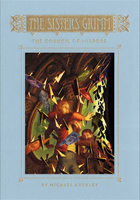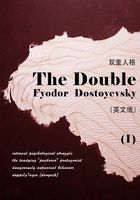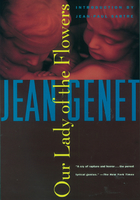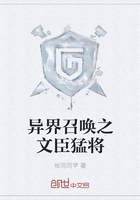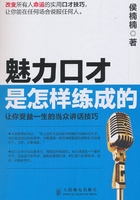What Women See
What we notice, what we believe is important, and what we perceive life should be are the primary components that shape our vision. The more authentically we understand, express, and act on the distinctive aspects of what we see, the greater our contribution will be and the more we'll fulfill our purpose in the world.
Translating vision into practice is challenging for anyone, but it can be especially difficult for women in organizations. This is because what women see can be out of sync with what the workplace expects. Having entered the workplace in significant numbers and having begun to assume positions of authority and influence only in the last thirty years, women have had little opportunity to shape the culture of work—its values, assumptions, and expectations.
The disconnect between what organizations expect and what women at their best have to offer has become an issue as workplace demands have grown more intense. Companies today require more from their people—more time, greater commitment, fresher ideas, a continual learning curve. Thriving in this environment requires passion and engagement. But it's difficult to feel fully engaged when your vision, your fundamental way of seeing things, is not understood, recognized, or valued. And it's tough to feel passionate when you feel unable to bring what is best about yourself to your work.
When women's ways of seeing are not validated, it short-changes women, requiring them to exercise their skills without drawing on the full power of what they notice and value. Operating at less than full capacity undermines their effectiveness and their ability to feel authentic, as well as keeping them from being fully present in the moment. It can also leach away the zestfulness and fun that comes from engaging what is best within themselves and putting that forth into the world.
When women's ways of seeing are not validated, it also shortchanges their organizations, narrowing the base of talents and ideas from which they can draw. In a global environment where change is constant, companies need to be nimble, innovative, and very smart, which is why relying on the usual suspects to do the usual things in the usual way is no longer effective. When organizations fail to appreciate the fullness and scope of what women have to offer, they diminish their capacity to "think outside the box"—a frequently stated objective—because the blinders they require their people to wear keep them firmly inside it.
We've all seen what happens when women's ways of seeing are not recognized or are dismissed as being beside the point. The consequences play out on a large scale—which we'll explore later—and in the smallest interactions.
For example, Jim and Jill are walking out of a sales meeting in which the regional manager has been outlining the sales figures he expects their team to meet in the next quarter. As they step into the hall, Jim, who was scribbling down numbers during the presentation, says, "I figure it's doable if we can get client X to expand his budget by 6 percent while cutting our costs by $3.2 million."
Jill nods. "That sounds about right. But did you notice how Ron in the back of the room seemed depressed? He's usually so outgoing and engaged."
Jim doesn't respond. He's wondering why Jill is making an irrelevant comment. She needs to be thinking about how they can make their numbers, not worrying about what someone else is feeling. Besides, Jim wasn't looking at Ron. For one thing, he doesn't have eyes in the back of his head. Plus, he was focused on the presentation, which is exactly what the regional manager would expect.
Jill was paying attention, too, but not in a single-minded way. For example, she was aware that some of the attendees couldn't hear what the presenter was saying—not surprising since he has a habit of speaking too fast and then getting testy when someone asks him to repeat his remarks. But it was Ron's disinterest that most caught her attention. He's key to the team's effort, and it's going to be a rough road for everyone if he's struggling.
Still, it's clear to Jill that Jim doesn't want to pursue the subject. She's not sure she can make him understand that she was engaged by the presentation but was also taking in a lot of other things. She also wants to signal to him that she's on board. So she says simply, "I think your numbers are right on target."
This brief exchange typifies a fundamental dynamic that occurs thousands of time every day in the workplace. Both Jim and Jill are bringing useful information to their encounter: Jim by proposing specifics that could move the team ahead, Jill by noting a potential problem that could undermine it. Both Jim's focus and Jill's active antenna offer clear benefits to their sales team.
However, Jim can't see the value in what Jill is trying to contribute, nor has Jill framed her observations in a way that compels Jim's interest. Once Jill senses his skepticism, she backs off rather than persisting in trying to make her case. She gives up on trying to help Jim understand what she sees and tries to placate him instead. As a result, the team misses out on potentially vital information. And Jill winds up ignoring her own best insights, thereby undermining the value she could otherwise bring to the effort.
Such incidents occur because what Jill notices, believes is important, and perceives her company should be—the components of her vision—are to a large extent countercultural in her organization. Sure, the senior executives talk a lot about how "our people are our most important asset." They even had the phrase printed up as a "vision statement" on a laminated card. But it's not their authentic vision because it doesn't reflect what they actually notice or value or how they operate. It's just some-thing the president's speechwriter thought would sound good.
Jim accepts the discrepancy between what the company says and how it acts, and forges ahead. But Jill can't help wishing the company would match its actions to its words. If it did, she'd feel more at home and would have more to contribute. The company would also be a better place to work and would probably have better relationships with clients as a result.
But there's another reason that Jill's observations are not particularly valued in her organization, and that has to do with numbers. Most of what she notices, values, and would like to see can't be easily quantified or expressed by an equation. Many of her perceptions are relatively subjective. By contrast, Jim and the regional division head pride themselves on sticking to what the numbers tell them. The sales VP whom they report to is known for cutting discussions short with a brusque, "Just get to the bottom line." This reflects the company's presumption that numbers are not only an essential business tool but the final determinant of value.
Jill was a math whiz in college, and she can tote up a spreadsheet with the best of them. But she's never believed that numbers tell the whole story. She can't deliver an algorithm to prove that Ron is in a fragile state or offer a figure that quantifies how much his distraction could cost the sales team. Unable to put what she notices in a numerical frame, she can't figure out how to advocate for the value of her observations—so she ends up backing off entirely. She stuffs what she sees, and as a result her interaction with Jim is less authentic and productive than it otherwise might be.
Dr. Mary O'Malley, a neuroscientist and psychiatrist who works with senior executive women, sees exchanges such as the one between Jill and Jim all the time.[1] She notes that women often have difficulty defending the value of what they see in part because the traditional workplace is not necessarily structured to recognize subjective observation. Lacking support, women are likely to lose confidence in the value of what they have to offer and may internalize their inability to do so as a failure. Suppressing their best insights also makes women feel out of place and lowers the quality and authenticity of their exchanges. In the end, everybody loses.
Of course, not all women are like Jill, nor are all men like Jim. We're all individuals whose talents and aptitudes fall along a spectrum. Some women are totally focused on the bottom line and some men exhibit sensitivity to the nuances of human interaction. Some women do not question organizational values and commitments, and some men most certainly do.
But, in general, women's observational style tends to be broad and wide-ranging, while men tend to focus more narrowly on what they perceive as relevant to the task at hand. Women are continually scanning their environment for information, whereas men are more apt to restrict their observations to what a specific set of actions requires.[2] These complementary capabilities should be a source of strength and offer a perfect demonstration of the benefits that diversity can bring to organizations.
But because diversity is often viewed as a numbers game—"We will increase our percentage of women at director level by 30 percent over the next five years"—companies often end up missing the larger picture. Diversity does not result simply from creating a richer demographic mix. True diversity is the diversity of values.[3]
A Brief History of Attention
A physicist might describe the difference between men's and women's ways of seeing by saying that women's attention operates like radar, picking up signals across a wide spectrum, whereas men's attention operates like a laser, focusing on a single point in depth. Attention is the key word here, for what we see is determined by where we direct our attention. Our attention in turn is shaped by how we are accustomed to engaging our senses in the exercise of habitual skills. If we repair cars, we recognize the sound of a faulty belt as soon as the engine engages; if we bake bread, we can tell when a rising loaf is ready for the oven by pressing a finger to its surface. Our skills and experience channel our attention.
Given that men and women have until very recently exercised very different skills in the world, it's hardly surprising that they would—again, in general—attend to different things and have different ways of assigning value. Anthropologists like Helen Fisher believe the difference goes all the way back to the earliest phases of human history, when men contributed to their tribe's survival with their hunting prowess while women sustained the group by gathering plants.[4] Clearly, the ability to focus attention on a single task is an advantage when pursuing antelope across the plains, whereas reading the environment broadly is useful when your job is to choose which roots are safe and nourishing while also caring for babies and raising children.
As people settled into small communities, men and women continued to exercise different skills, with men protecting the group and women doing pretty much everything else. As agriculture grew more complex, the division of labor continued, with men working the fields and women tending to house and garden. When work became centralized in the industrial era, men moved from farms into factories and offices while women stayed at home to do the domestic work. With few exceptions, women who did work outside the home were driven by fierce financial necessity. Poorly paid, undereducated, and excluded from leadership positions, they didn't play much of a role in shaping the culture of the industrial workplace.
But the divide that has separated men and women since the dawn of civilization began to erode during the last thirty or forty years, as women entered the workplace in significant numbers and closed the historic education gap with men. This in turn has resulted in men taking a far more active role in raising children and has changed our perception of what it means to be a father. Men and women now exercise many of the same skills in the course of their everyday lives and share more aspects of their daily experience. This erosion of separate spheres has gained speed over the last twenty years as cheap, powerful, networked technologies have decentralized the workplace and begun to transform how both men and women work and live.
The tools we use determine the skills we develop, giving order to our experience and providing us with an identity in the world. The spear, the helmet, and the plow are ancient symbols of male activity, while the infant, the spade, and the spinning wheel have from earliest times symbolized the work of women. This identification of tool with gender persisted well into the industrial era; when Sally graduated from high school, for example, she was given a gold typewriter charm for her bracelet, a symbol that she intended to become a "career girl."
But the advent of the personal computer ended the identification of tool with gender, signaling a major shift in the relationship between men and women. For the first time in human history, men and women are not only using the same primary tool in their work but are also using different iterations of that tool to manage their personal and domestic lives. This requires them to develop similar skills and to use a common language, making our daily experience more similar to each others' than in the past.[5]
As the tissue and the texture of men's and women's lives become more similar, our ways of being in the world become less tied to and determined by gender. Yet we retain fundamental distinctions that are a legacy of our different but complementary histories, for evolution proceeds at a slower pace than technological or social change. One of the most important of these distinctions is the difference in how men and women direct their attention, which in turn determines what we see.
We bring our individual ways of seeing with us to our daily work. The diversity of our perceptions has the potential to broaden and enrich the scope of how organizations make decisions and form connections in the marketplace, but all too often this does not occur. Despite an often sincerely stated commitment to supporting and developing women's talent, many organizations still do not know how to value women's ways of seeing or understand how to use women's insights to their advantage.
The costs to organizations of this failure are not easily quantifiable, but they are very real. The costs to women are more obvious. When women's most authentic observations are not valued, they either resign themselves to suppressing their best contributions, or they decide to take their insights and talents elsewhere. In either case, their capacity as leaders is diminished.
Acting on What We See
We make our vision tangible by acting on what we see. Our actions provide the link between what we see and what we achieve in the world. When we don't have the opportunity to act on our perceptions, our true potential to contribute remains locked inside ourselves. What should be a source of power in the world becomes a source of frustration. This damages our ability to bring our whole self to our tasks and sets us up to feel inauthentic even when we are doing our jobs. Because our minds are divided, we can't be fully ourselves.
Dr. O'Malley believes that the disconnect between what women see and what their organizations value may be the primary reason that women are more likely than men to report feeling fraudulent at work.[6] Elizabeth, a top editor at a major financial magazine, provides a perfect example.
My boss and colleagues always said I was doing a good job, but I never felt I was because I wasn't able to bring my best thinking to my work. In the morning when I got dressed, I'd look in the mirror and I couldn't put together what I saw with who I was supposed to be. The only thing that made my job feel real was picking up my briefcase. I'd walk out the door with it and think: I must be this person because otherwise I wouldn't be carrying this briefcase.
When women like Elizabeth—talented, highly educated, and insightful—feel disconnected from who they think they are supposed to be at work, they can lose energy and a sense of purpose.[7] They also lose touch with the creativity that is available to all of us when we are fully present and engaged—the creativity that is synonymous with flow.[8] By routinely suppressing their own best insights, women undermine their own capacity for satisfaction and joy.
Dr. O'Malley observes that people feel fraudulent in situations where their real value is not being acknowledged or in which they are being measured according to a standard that doesn't apply.[9] She says, "It's this vague feeling of unease that occurs when we know we have something real to offer but we don't have the right words to articulate it. When this happens, we tend to measure our self-worth by externalities that always leave us falling short of the mark."
Timothy Keller, the author and pastor, expands upon this observation. He writes, "In the end, achievement can't really answer the big questions—Who am I? What am I really worth? How do I face death? It gives the initial illusion of an answer. There is an initial rush of happiness that leads us to believe we have arrived, been included, been accepted, and proved ourselves. However, the satisfaction quickly fades."[10]
As we surveyed similarities and differences in how men and women perceive, define, and pursue satisfaction in their work, we found that both men and women place a high premium on feeling authentic at work.[11] They both agreed with assertions such as, "I seek congruence between my feelings and my actions" and "I strive to be the same person at work and at home." Yet, achieving this kind of alignment can be difficult for women because what they notice, value, and believe the world should be often runs counter to the culture they find at work. In order to make their best contribution, women must find a way to communicate and build support for what they most authentically see.
注释:
[1]Mary O'Malley, interview with the authors, December 18, 2009.
[2]Katharine McLennan, "The Neuroscience of Leadership and Culture," Mettle Group, March 2007, at www.networkcentral.com.au/documents/NeurosciencesArticle.pdf15–16.
[3]On diversity of values, see Sally Helgesen and Julie Johnson, The Satisfaction Profile Assessment, 2008, published by Harris Interactive, at www.sallyhelgesen.comSee also R. Roosevelt Thomas, Building on the Promise of Diversity: How We Can Move to the Next Level in Our Workplaces, Our Communities, and Our Society (New York: AMACOM, 2005), 99–136.
[4]On differences in skills between the sexes, see Helen Fisher, The First Sex: The Natural Talents of Women and How They Are Changing the World (New York: Random House, 1999), 3–29.
[5]On how technology is eroding barriers between men and women, work and home, parent and child, teacher and student, see Sally Helgesen, Everyday Revolutionaries: Working Women and the Transformation of American Life (New York: Doubleday, 1998), 71–114.
[6]O'Malley, interview.
[7]On women being unhappy, see Marcus Buckingham, Find Your Strongest Life (Nashville: Thomas Nelson, 2009), 29–48. See also responses by Arianna Huffington, "The Sad, Shocking Truth About How Women Are Feeling," Huffington Post, September 17, 2009, and Maureen Dowd, "Blue Is the New Black," New York Times, September 19, 2009.
[8]On the concept of flow, see Mihaly Csikszentmihalyi, Flow: The Psychology of Optimal Experience (New York: Harper and Row, 1990), 143–63.
[9]O'Malley, interview.
[10]Timothy Keller, Counterfeit Gods: The Empty Promises of Money, Sex and Power, and the Only Hope that Matters (New York: Dutton Adult, 2009), 74–75.
[11]Helgesen and Johnson, The Satisfaction Profile Assessment.

